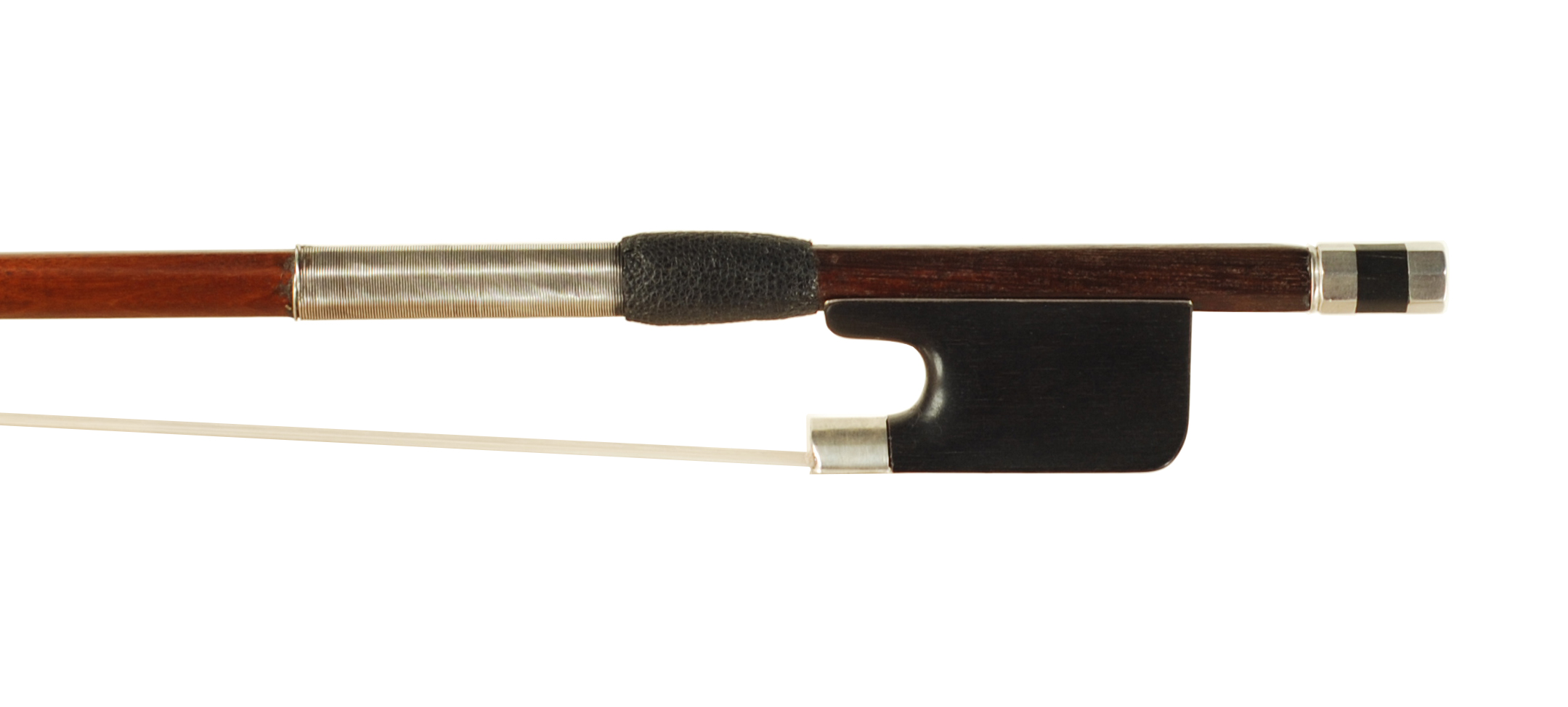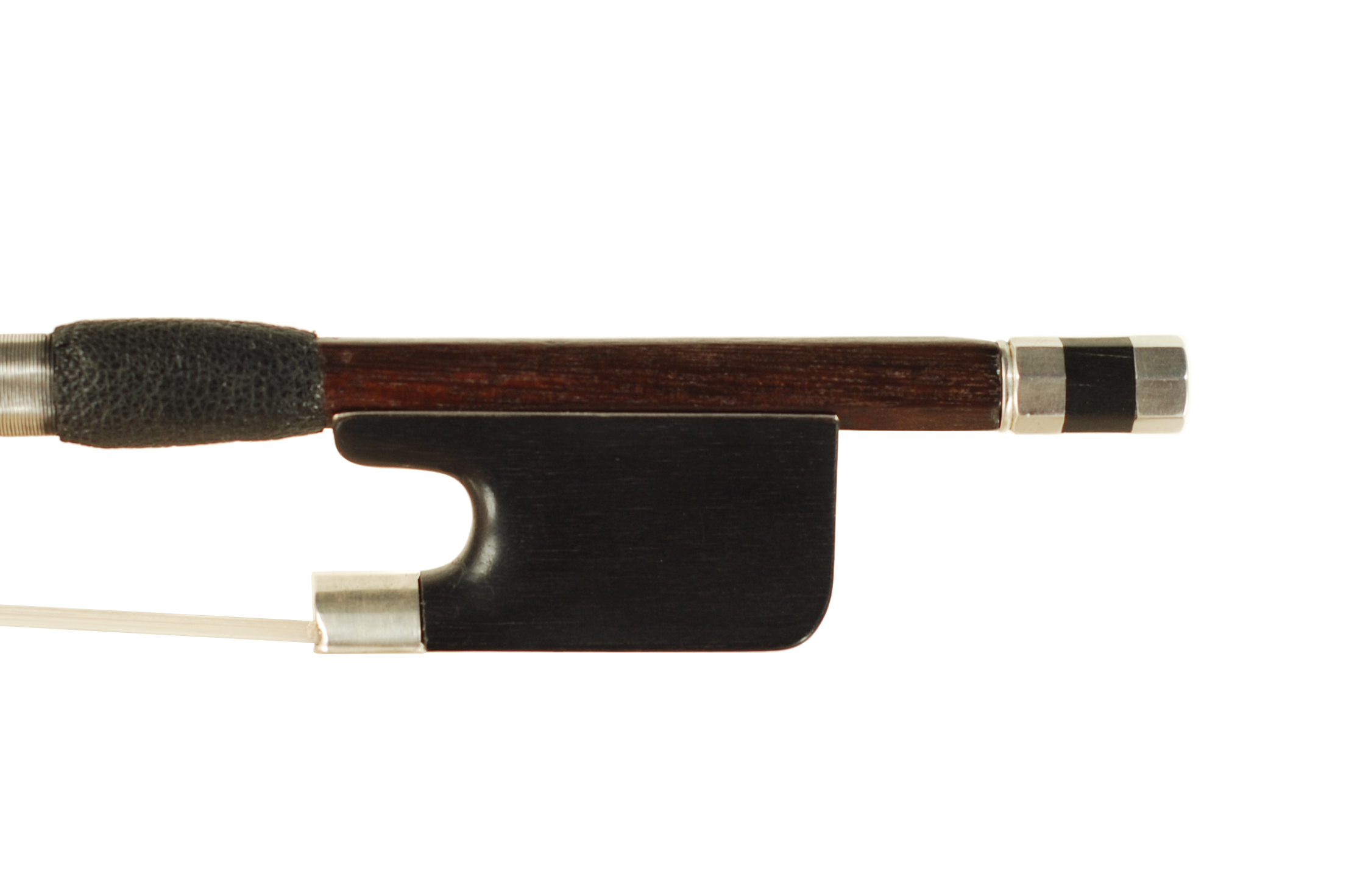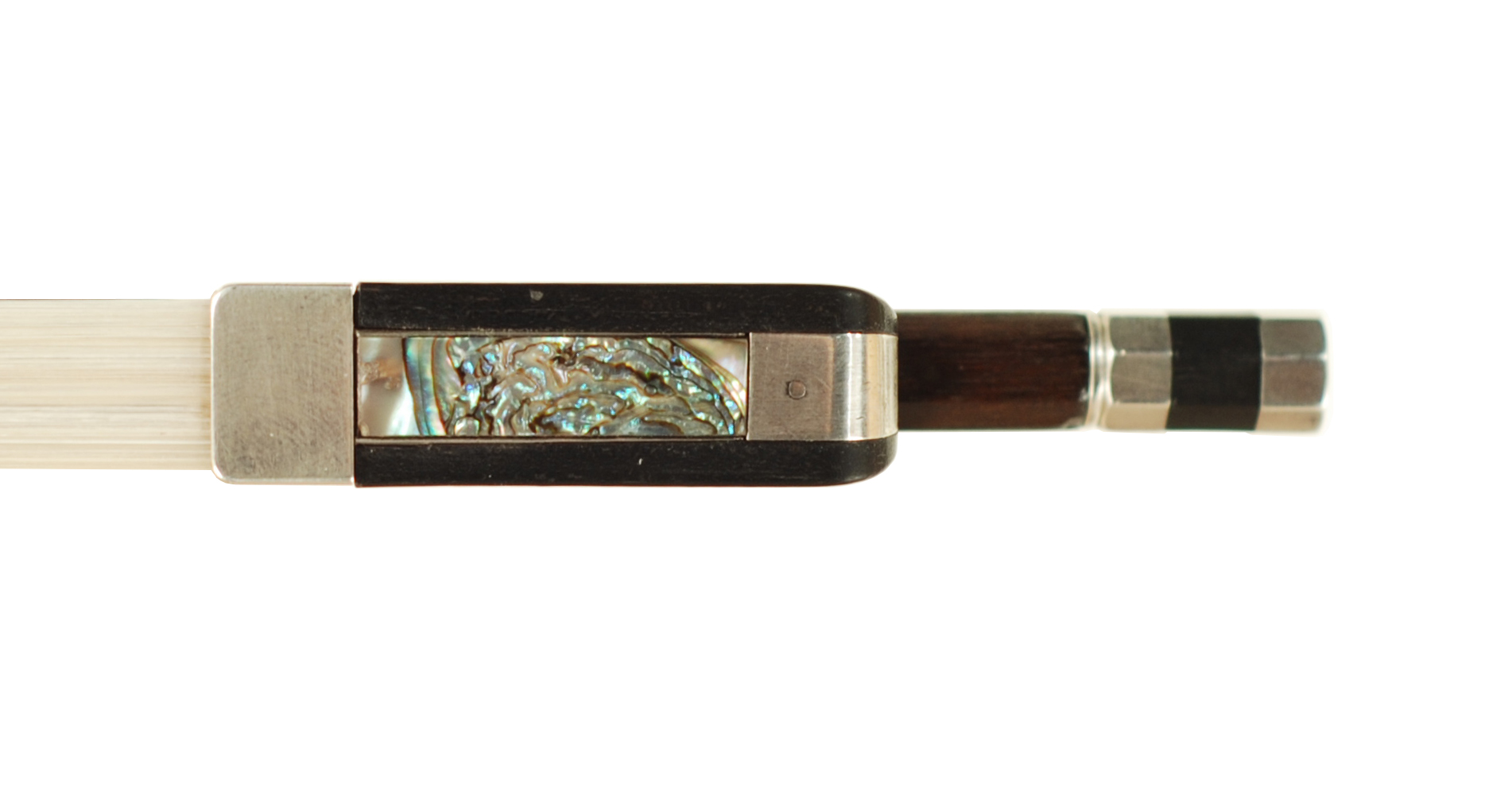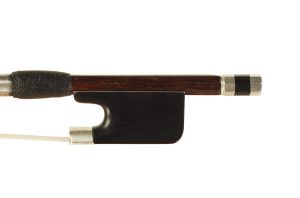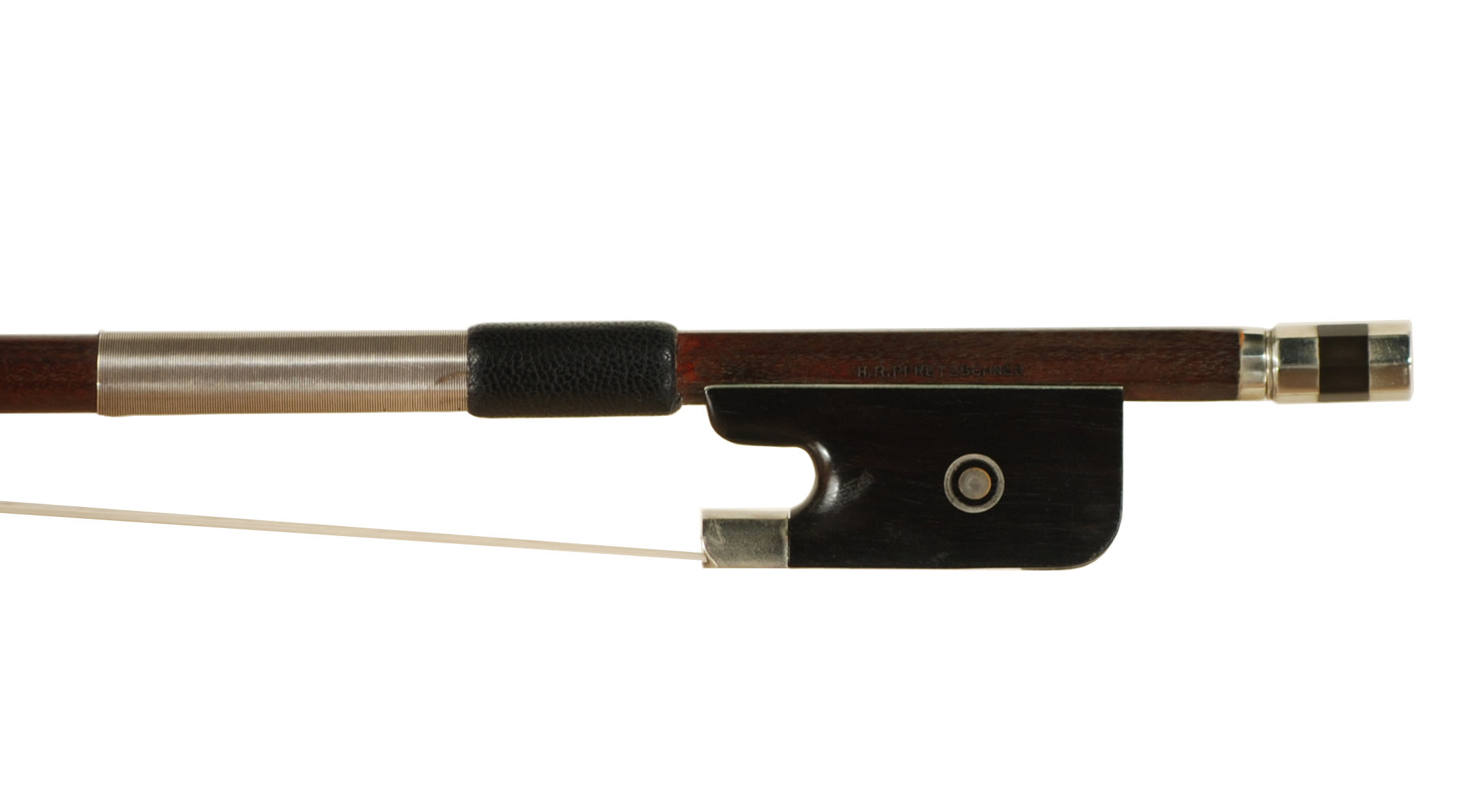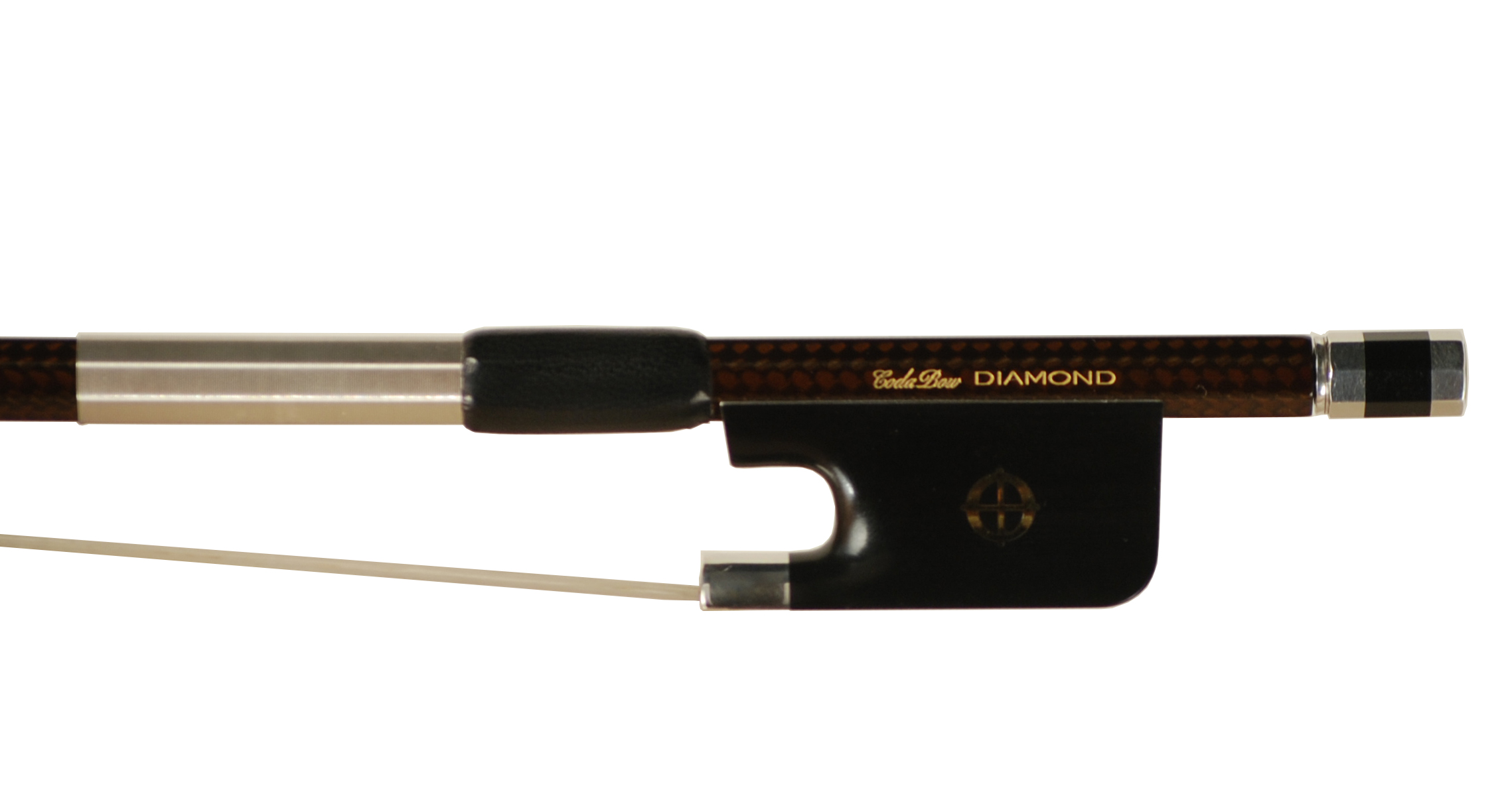Late 19th Century Sterling Cello Bow – Markneukirchen circa 1880-1900
$3,000.00
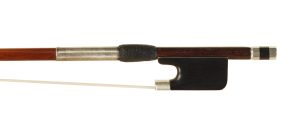
Someone recently asked me what I thought was the most important part of the violin and then asked the same question about the bow. In the bow, I feel it is definitely the stick itself. Paubrasilia Echinata, also known as pernambuco, grows exclusively in North-Eastern Brazil. Bow making with this wood has not changed for over 270 years but has now been deemed off limits by the Brazilian government and the CITES group. The wood for the last 4 years has been banned from use by bow makers. Many string players claim that nothing beats the precise resistance, density, and elasticity of pernambuco for projecting the sound. The wood for this stick would have begun growing in the middle to late 1700’s, then harvested in Brazil in the early to mid-1800’s, transported to Europe, and cut and dried for 15-20 years before even being selected by this maker. It is an awesome piece of pernambuco that shows slightly darker in the frog area because of normal handling by players.
The bow is in fantastic condition, no issues: pernambuco, choice wood, round in section, and mounted in sterling silver. I cannot decipher the makers name and there are no markings of country of origin on the bow either in the typical places. The stick is strong in its formation, with tight grain from a slow growing dense tree. The entire bow shows fine craftsmanship. The head of the bow has a strong point that sweeps back gradually to the back of the head. The back of the head has perfect knife work in the chamfers that I love. The chamfers in the head extend back a few millimeters into the throat of the stick where you can see it blend into the round section of the bow. The head needed a new facial tip replacement and was the only thing that needed to be restored on the bow. The bow has a gradual camber. It is thinner at the head area and transitions to a very gradual taper, never getting overly wide or too thick. The bow is well thought out and is a study in incrementation from the tip to the very end at the button.
The frog end is interesting in that the octagonal part of the stick is 150.0 mm long and the silver winding ends before the taper of the octagonal completes to a round at about 185.0 mm. The ebony frog is slightly small than a more modern 20th century German frog. It is blind eye frog, no mother-of-pearl eyes, and the ferrule extends slightly farther than the top of the frog at the throat area. The silver jewelry work is fitted well, and the mother-of-pearl slide is captured in a silver channel. The slide is conical, wider at the ferrule than at the heel. The silver heel contains pin work, and the silver lining is held in by two small bronze screws. The silver three-piece button contains no pins.
This older bow is in fantastic condition and plays off the charts! Intricate articulations and the handling of the bow come very easily. Yes, the bow is light in the hand but plays with strength. At the shop, we have over 800 sticks made in pernambuco, completed, restored, and ready for purchase. If you are looking for some great sticks check out this bow and others in our collection.
Weight fully haired 77.0 grams
